For the entire time I’ve run CoffeeGeek, this is one of the top questions from our readers and members, and via social media. It’s even more common than “hey, have you heard of that cat poop coffee?” or “what’s the best coffee in the world”.
What is the best espresso machine of all time, for consumers?
The answer, of course, is entirely subjective. Based as much on opinion and personal preferences as it is on technology, ability and reliability of the machine. Because of this, I usually try to avoid answering this question, often deflecting it or redirecting the conversation to what’s really important in a home espresso setup (the grinder).
The Speedster
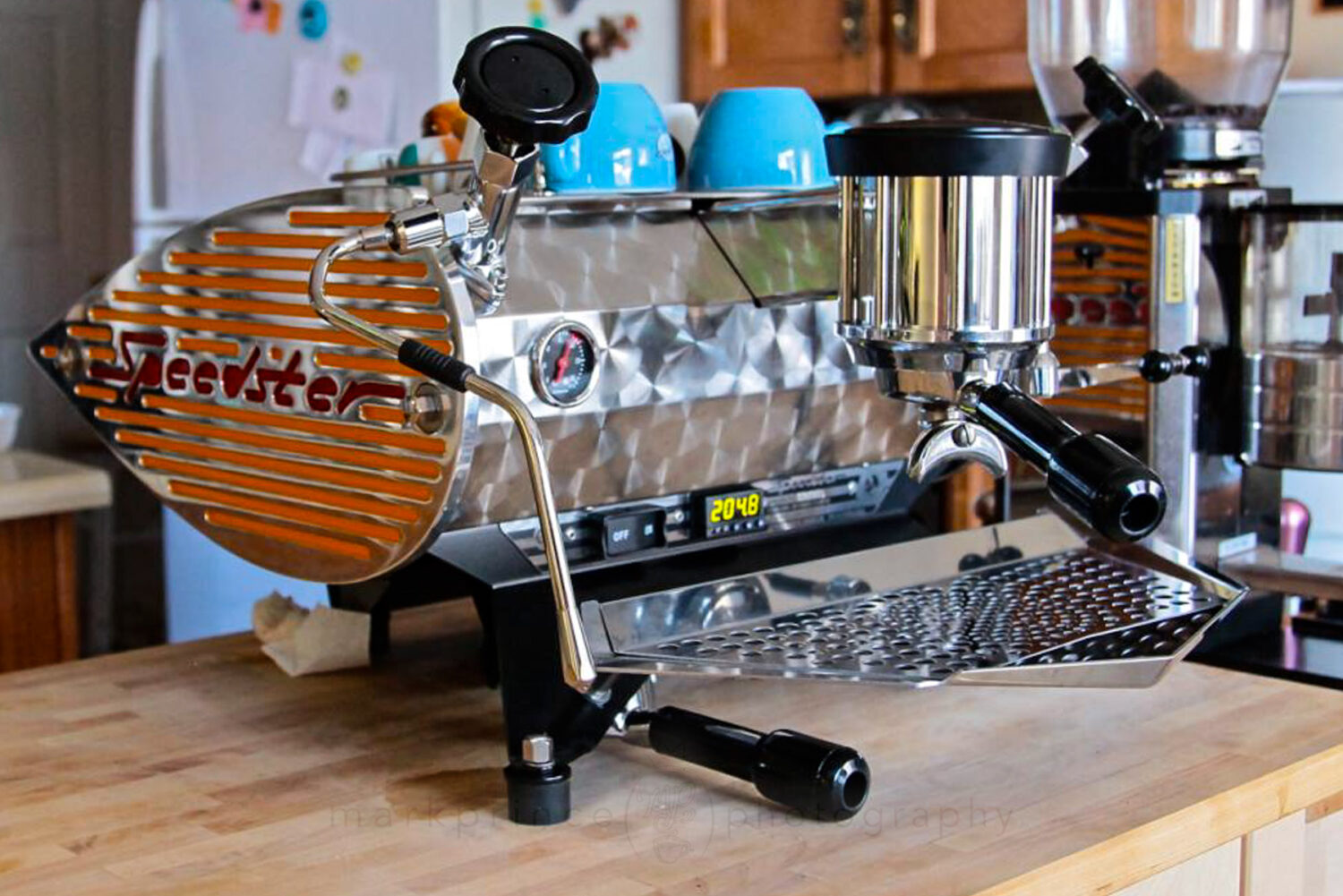
If I were put on the spot, my go to answer for a long time was always the same: the Kees van der Westen Speedster. Not only is that machine capable of producing five star espresso shots all day long, but it actually makes you feel kind of awesome while you’re doing it. You feel part of the process, but the machine’s unique ability and engineering deliver the goods as well. It is the true ultimate in a hand crafted, unique and individual espresso machine with character to spare.
After owning the machine for a few months, I paired it up with a Verslab M3 grinder. This may be a boast, but I knew I was pulling better shots on the Speedster and Versalab than the finalist baristas at the World Barista Championship were doing in competition. This wasn’t because of my own skill. It’s because I had an espresso machine better than the WBC machine of the era. Ditto on the grinder. They were that good together.
You don’t see a lot of influencers online talking about the Speedster because, to be honest, Kees don’t got time for influencers. He very rarely sends out test machines for people to try and blog or youtube about. I suppose if Hoff asked him, he’d send him one (Jim does own a KvdW machine, just not a Speedster).
I owned and used a Speedster for a decade (yup, I bought one of the first ones ever sold in North America), and that gave me the background and experience to label it the best machine of all time. But there is a caveat. Not only is the Speedster obscenely expensive (landed cost in the US is around $15–$16K now, incl taxes and shipping); it is one of the most expensive machines to own and maintain in a home environment.
In my 10 years of ownership, I spent, on service and maintenance, more than what I paid for the machine initially. A lot of stuff on that machine broke down and needed replacing, from the SSRs to the PIDs, and most of the 7(!!!) Parker solenoids. I even had to replace the preinfusion piston assembly at one point.
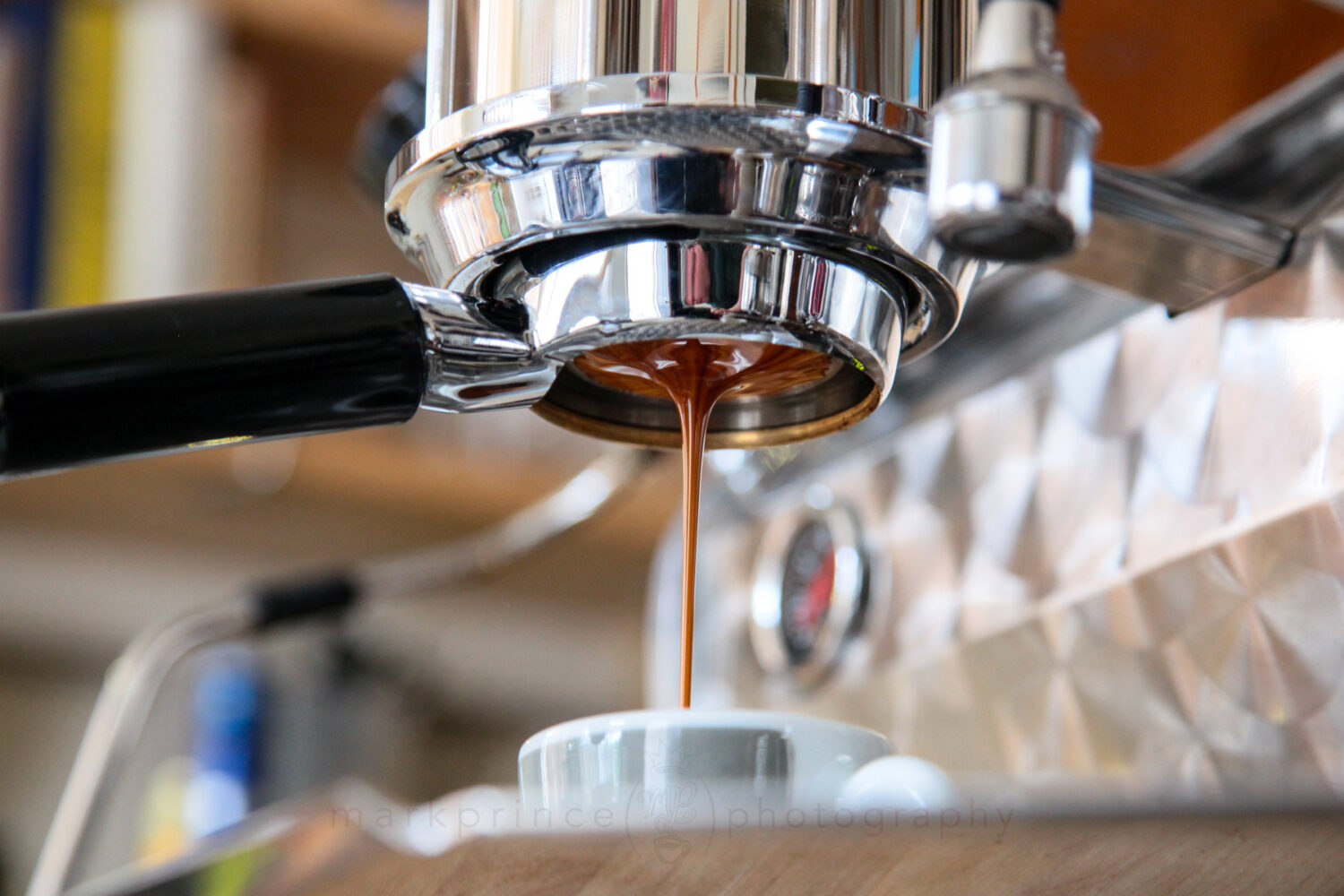
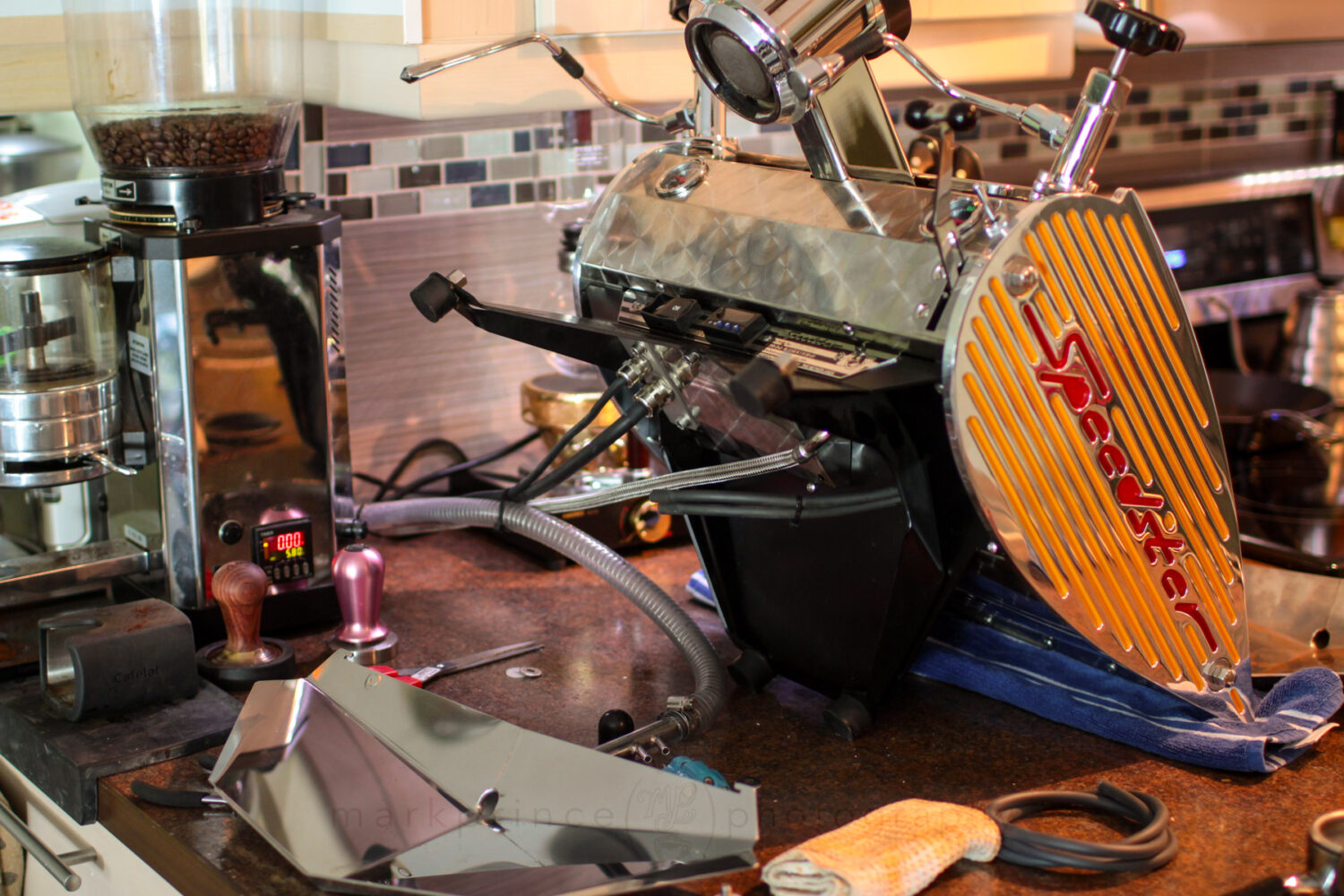

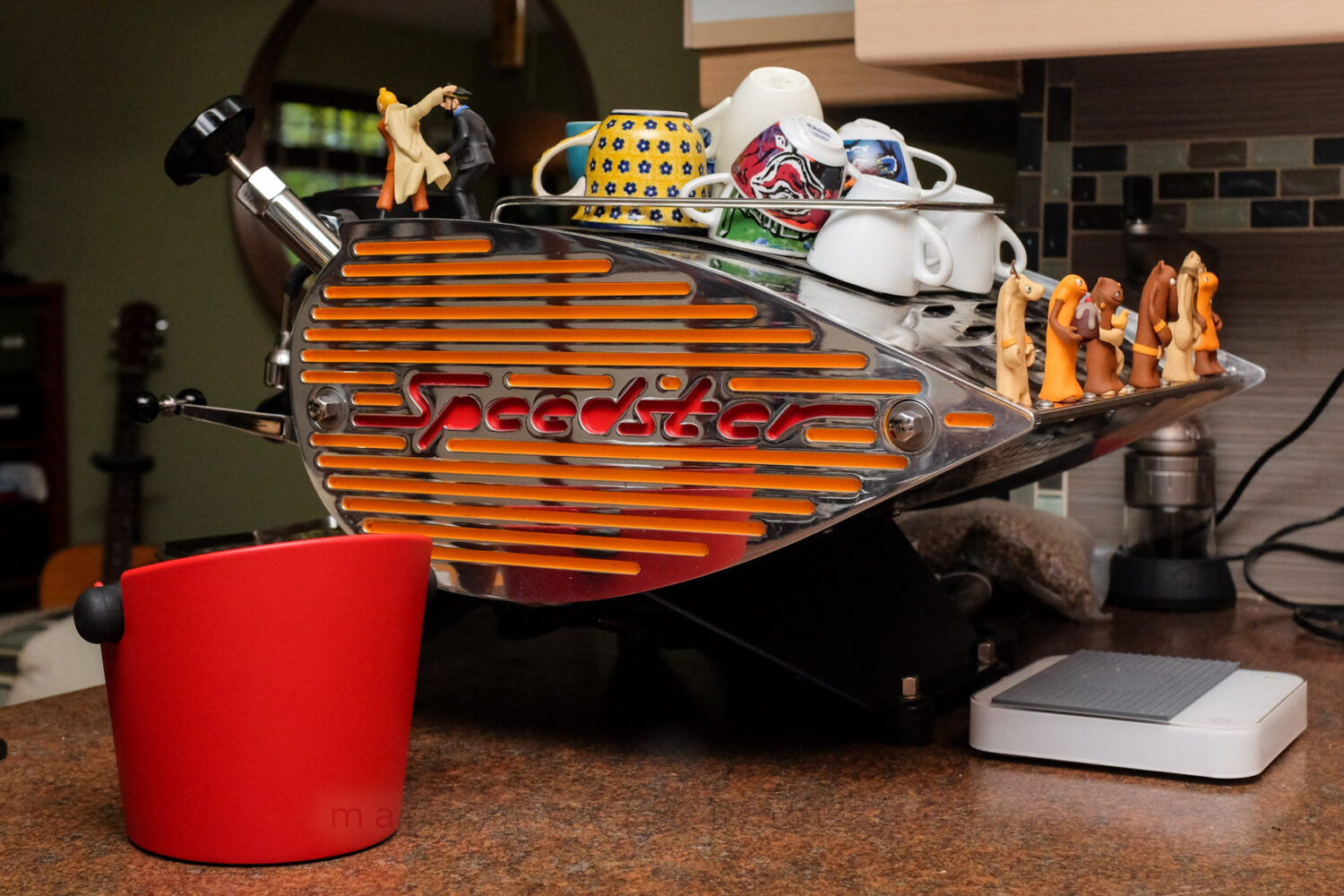
And therein lies the rub. If you factor in literally everything about an espresso machine, including initial cost, ability, mechanics, reputation, features, build quality, how it makes you feel operating it, and operational cost, maintenance and service, well, the Speedster is not the best espresso machine in the world.
To this day, it pains me to say that. I sold the machine three years ago, and I still miss it. A lot.
The La Marzocco GS3
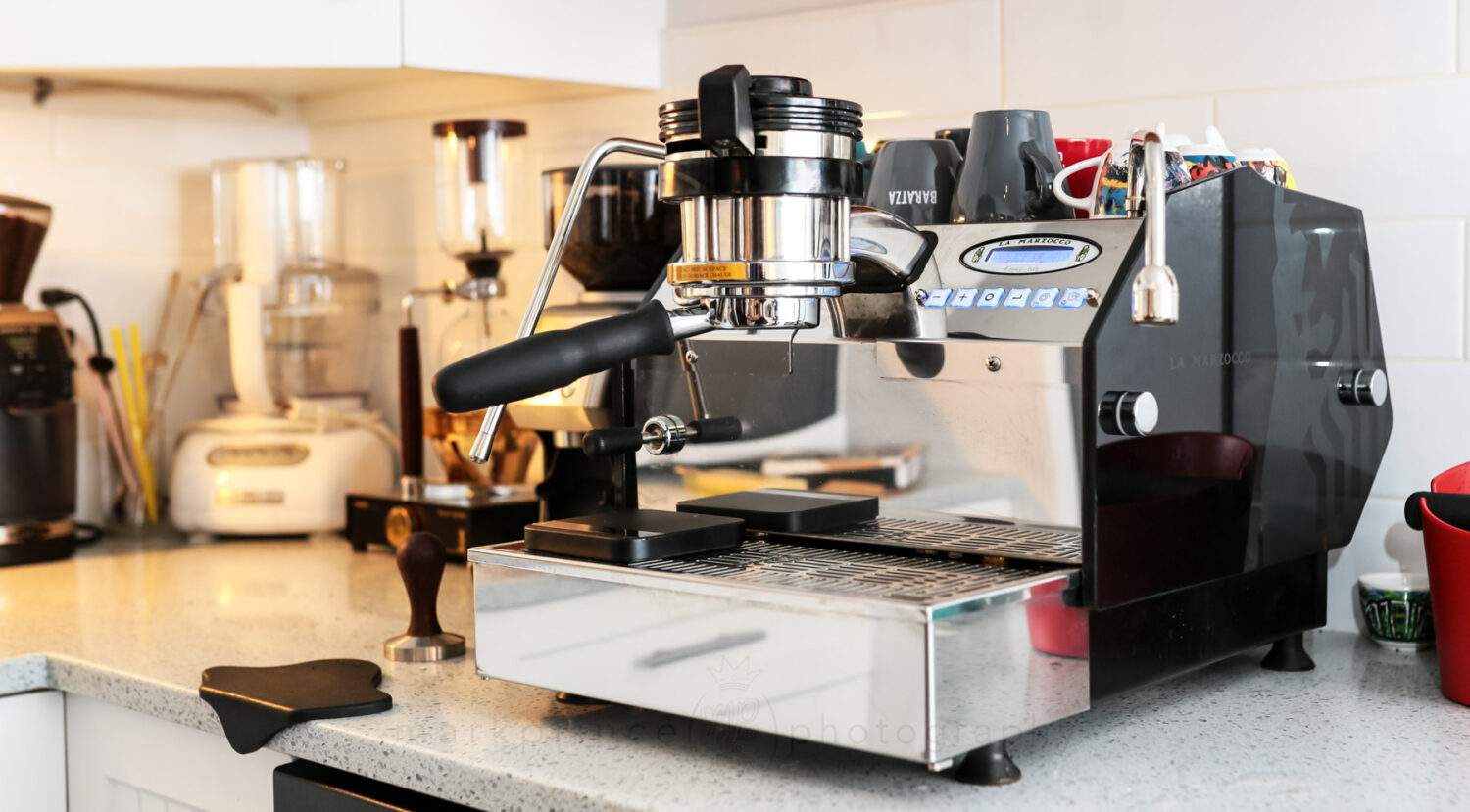
Then there’s the La Marzocco GS3, which would normally be my very close second choice as the best in home espresso machine in the world after the Speedster. But sadly, when all things are factored in, it too is not the best machine you can buy today.
The GS3 is an absolutely landmark, ground breaking, standards setting machine. It was the first machine developed (not sold, but developed) with PID controls. It was the first true dual boiler machine to run on 110V with no real compromises. It was the first successful home machine to have a rotary pump running on a 110V setup.
The GS3 also has La Mazocco’s unique saturated group design (KvdW machines sort of copy it, to be fair). The steam ability is off the chart. It had the ability to run on an economy mode (which still seemed like full power) on 110V 15A, but if you plugged it into a 110V 20A circuit (most kitchens have this), it would go into full throttle mode.
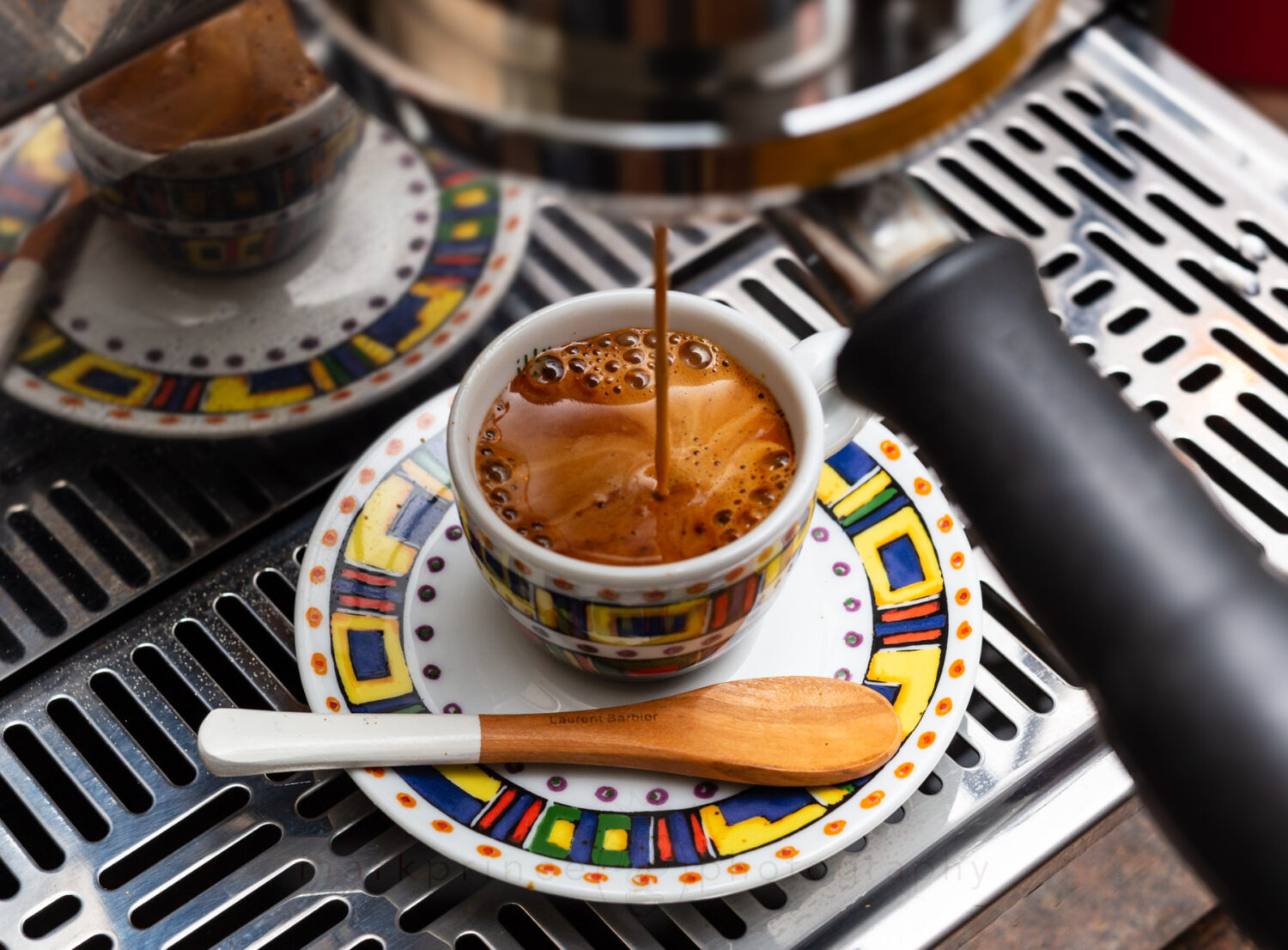

And it produces absolutely amazing, super consistent and temperature stable shots of espresso. All day long.
I was involved in the development of the GS3 machine; indeed, I still own one of the late prototype versions. It’s sitting on a workbench in our basement, and I still fire it up once in a while. Here’s what it looks like:

I’m on my third production La Marzocco GS3, and it sits in our kitchen as I type this.
Third? Yup, because like the Speedster, the GS3 is finicky, had some early build issues, and continues to be a machine that requires a lot of expensive service. Let me walk you through my own history with the GS3.
I bought, at a discounted price, a very early production unit back in 2007 (no, La Marzocco did not give me a free one, despite me being involved in the development); that machine lasted about 4 years with me spending about $2,000 on service calls on it past the one year initial warranty. It was a problem machine with a lot of early build quality issues.
La Marzocco USA agreed to swap it for a paddle version around 2011 (which wasn’t available in 2007) though I was charged a one time $1,000 premium to get the GS3 MP variant. That unit also turned out to be really bad (basically a dud, but I won’t go into all its issues with leaks, failing parts, pressure issues, etc), so La Marzocco swapped that one for another model in 2014-2015, provided I drove the dud one down to Seattle, to pick up the new unit to bring back to Vancouver.
I did that. And since then, that 2015 MP GS3 machine has seen about $2,400 in service maintenance, and a one time $2,000 cost to upgrade it to the new Strada pressure control paddle group (which comes standard with the current GS3 MP models). All told, my ownership of a La Marzocco GS3 has cost me an initial investment of $6,800 (that’s $10K in todays’ dollars), and another $7,500+ in service, maintenance and upgrades.


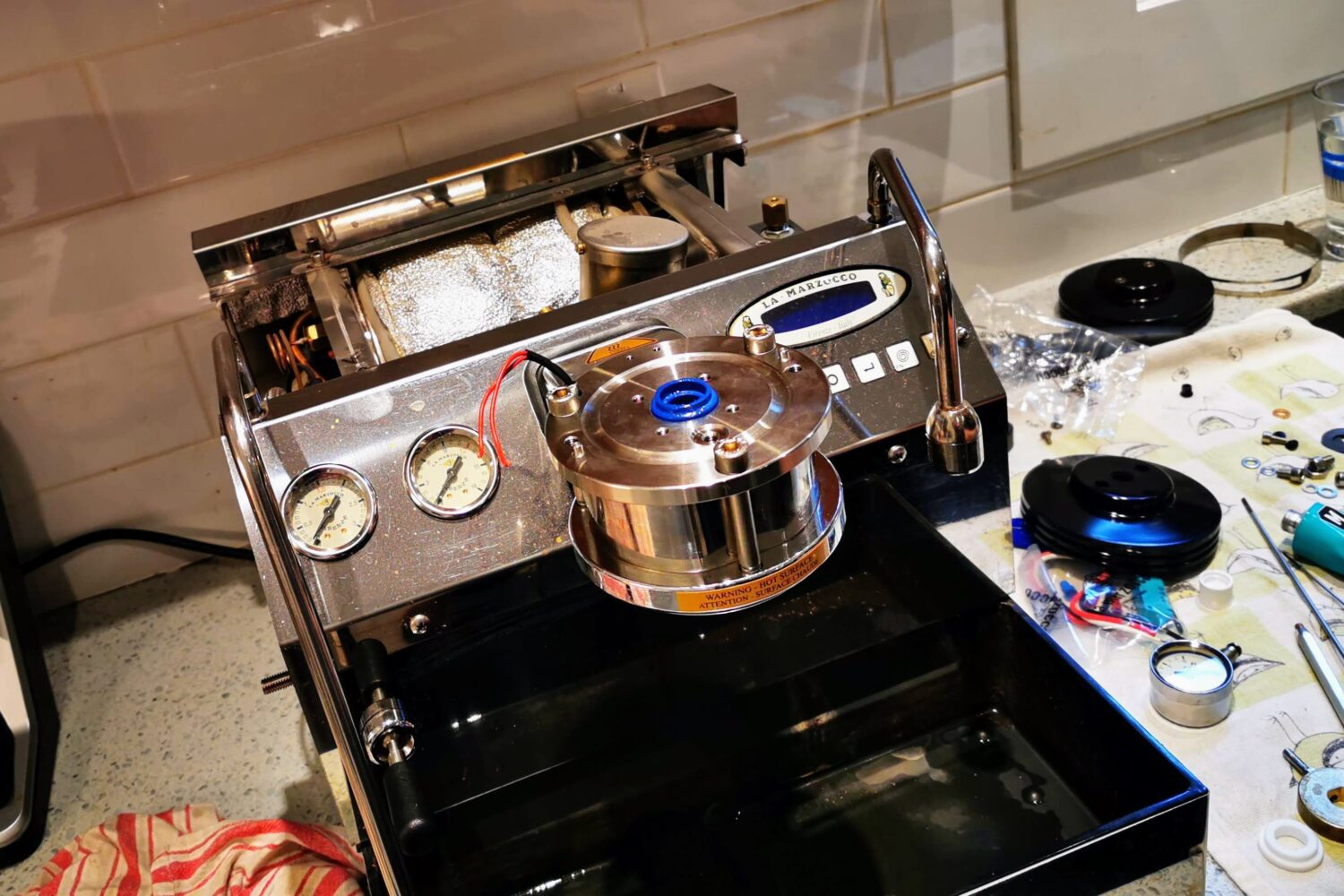
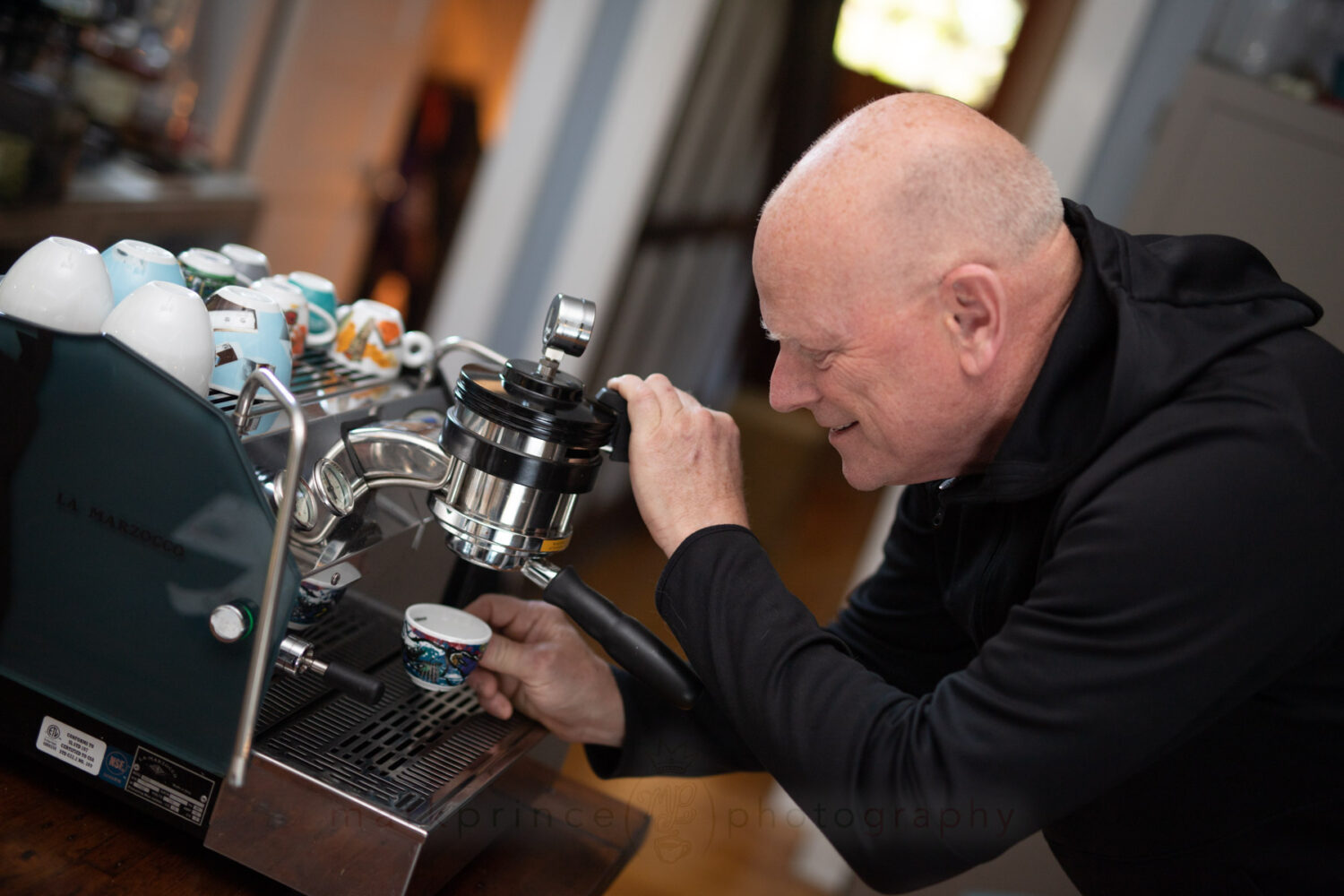
In good faith, I cannot ‘proclaim’ a $7,500-$9,000 machine as the best in the world in the consumer espresso space if the maintenance, service, and parts prices end up costing as much as the initial machine purchase inside of a decade. I mean, La Marzocco charges $400 just for the drip tray pan on the GS3 (which is just plastic wrapped with thin steel, and a few screw on lock claps). And $250 for the drip tray cover! Don’t ask what the replacement tray for the Speedster costs: you cannot afford it.
As a side note, I suggested to La Marzocco, way back in 2004 when I was involved in the development, that they include an AppleCare+ like package for GS3 owners. Pay a yearly fee (I suggested $150 back then, though I guess $250 today would be more appropriate), and get unlimited service and support on the machine. Caveat is, owners can only buy into it within the first year of ownership, then keep paying it every year to stay in the program.
I feel this would make La Marzocco a ton of money, but also save SOME GS3 owners from a lot of repair, maintenance, and service costs. Of course, La Marzocco did not do this. Perhaps because they were aware of the service LM GS3s require a few years down the road.

But I digress. We were talking about the Best Espresso Machines in the World.
The Best Espresso Machine Today
If we are to pick the best espresso machine in the world, every factor about the machine is equally important. I listed most in the Speedster section above, but to reiterate, it includes: the quality of the materials and parts used in the machine; the build quality; the usability factors; the featureset overall; the noise it makes; the machine’s aesthetics; how it makes you feel in ownership; and of course the drinks it outputs. Equally important are the various cost of ownership categories: bang for buck, service costs, after sales service and support from the vendor or manufacturer, parts costs down the road, and resale value.
With all these factors in mind, there’s two machines that I think stand out as the best machines in the world, in the consumer espresso space.
One is the Lelit Bianca V3 espresso machine. The other may surprise you. It’s the Breville Bambino Plus.
The Lelit Bianca V3: The Best Espresso Machine of All Time
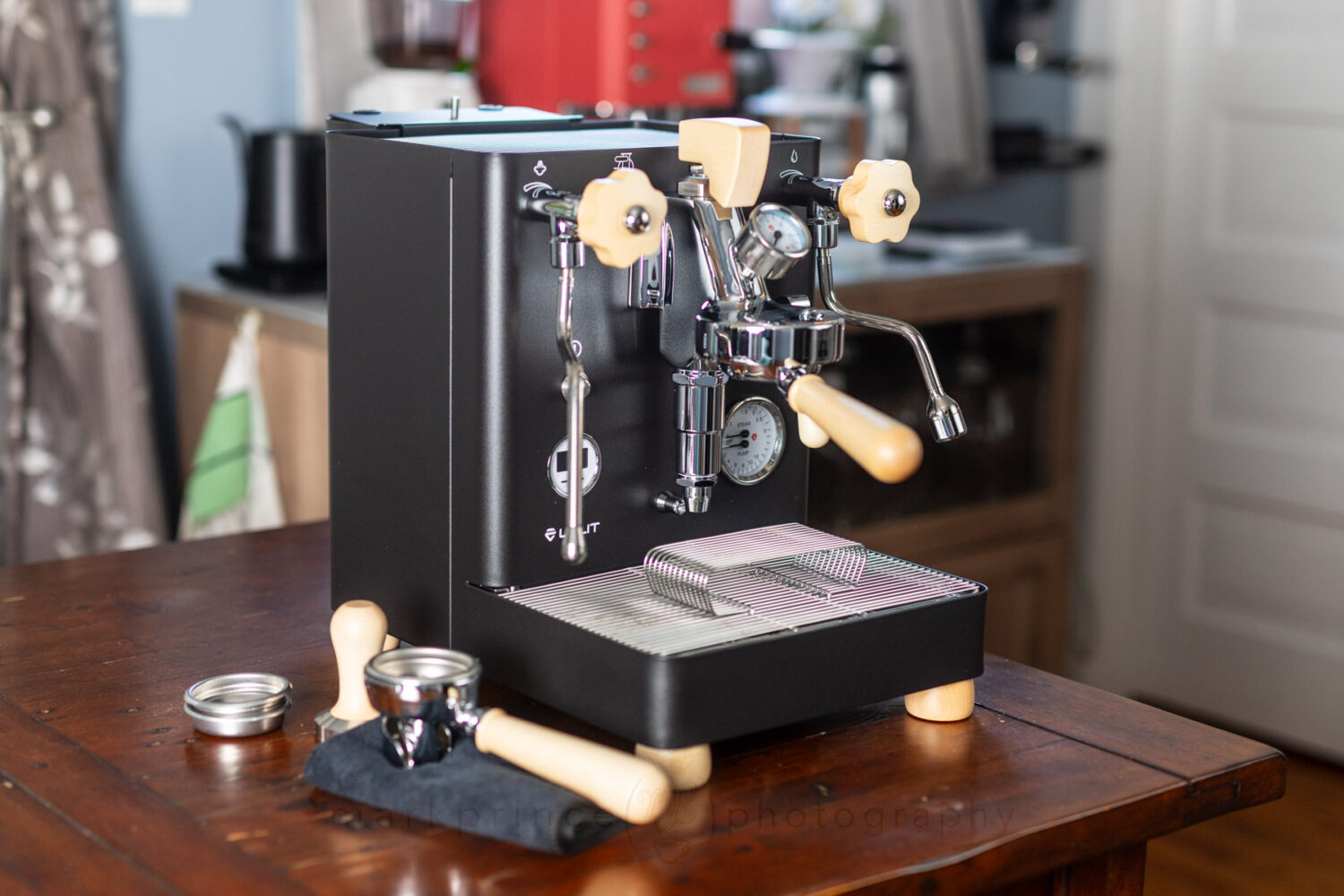
We are midway through our full review process on the Lelit Bianca, and every single day I become more and more impressed with this $3,000 machine. I don’t like the phrase “end game” and how it is so casually used in coffee influencer circles, but I recently learned something about the Lelit product lineup as a whole, and the Bianca in particular that have pushed it over the top into what I think is a true end game machine.
First of all, pretty much everything the La Marzocco GS3 paddle group machine can do, the Bianca can do in a package costing almost 2/3rds less. And even more so. The Bianca has three independent pressure modification systems on it; two are programmed automatic modes, and the third is a completely manual control. The Bianca’s PID system isn’t as granular as the GS3 is (which can go down to 0.3F adjustments), but it is smarter and more modern than the GS3. The Bianca, like the GS3, can be plumbed in, and attaching this machine to your home water line increases the ways you can play with pressure profiling, more so than the GS3 allows.

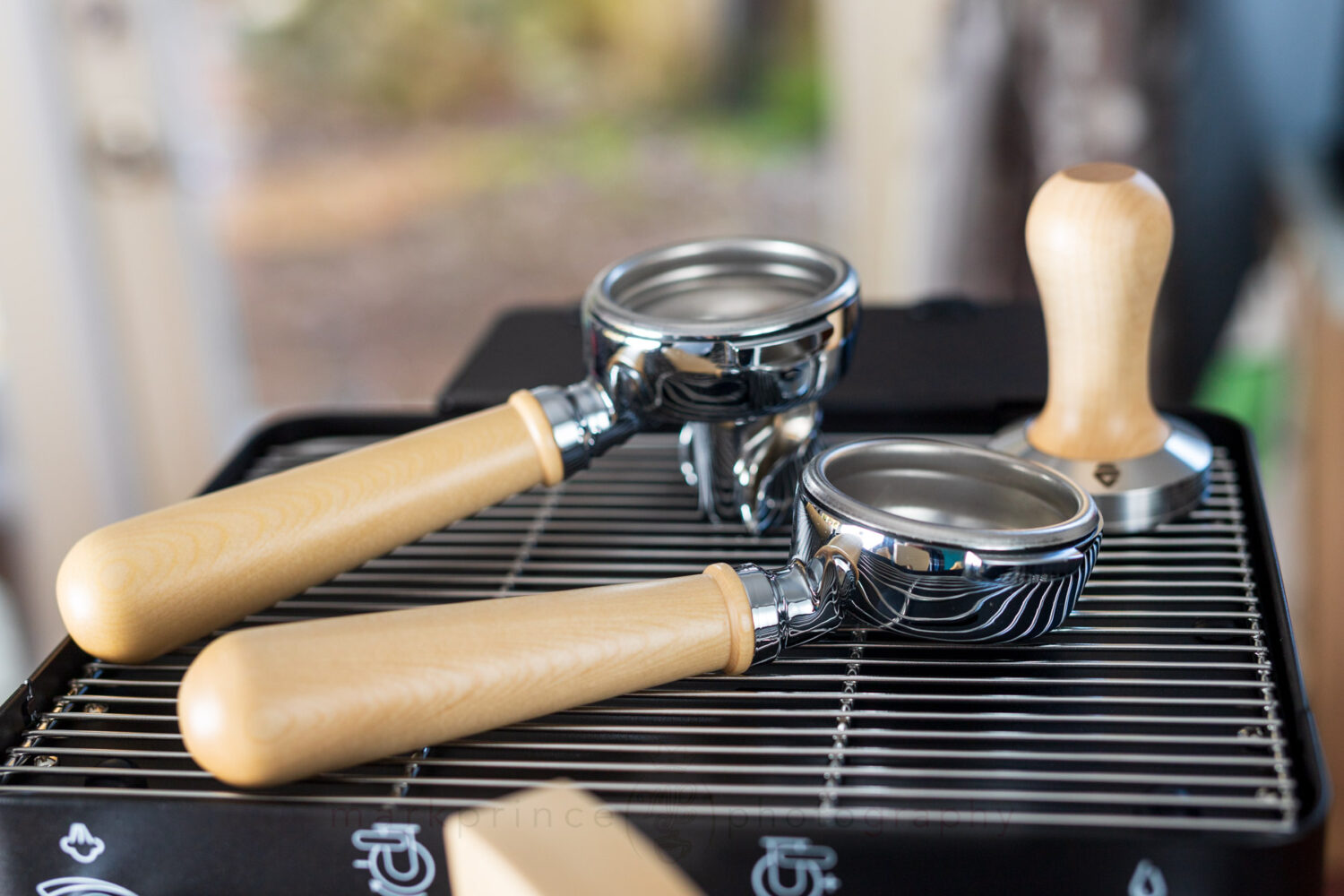
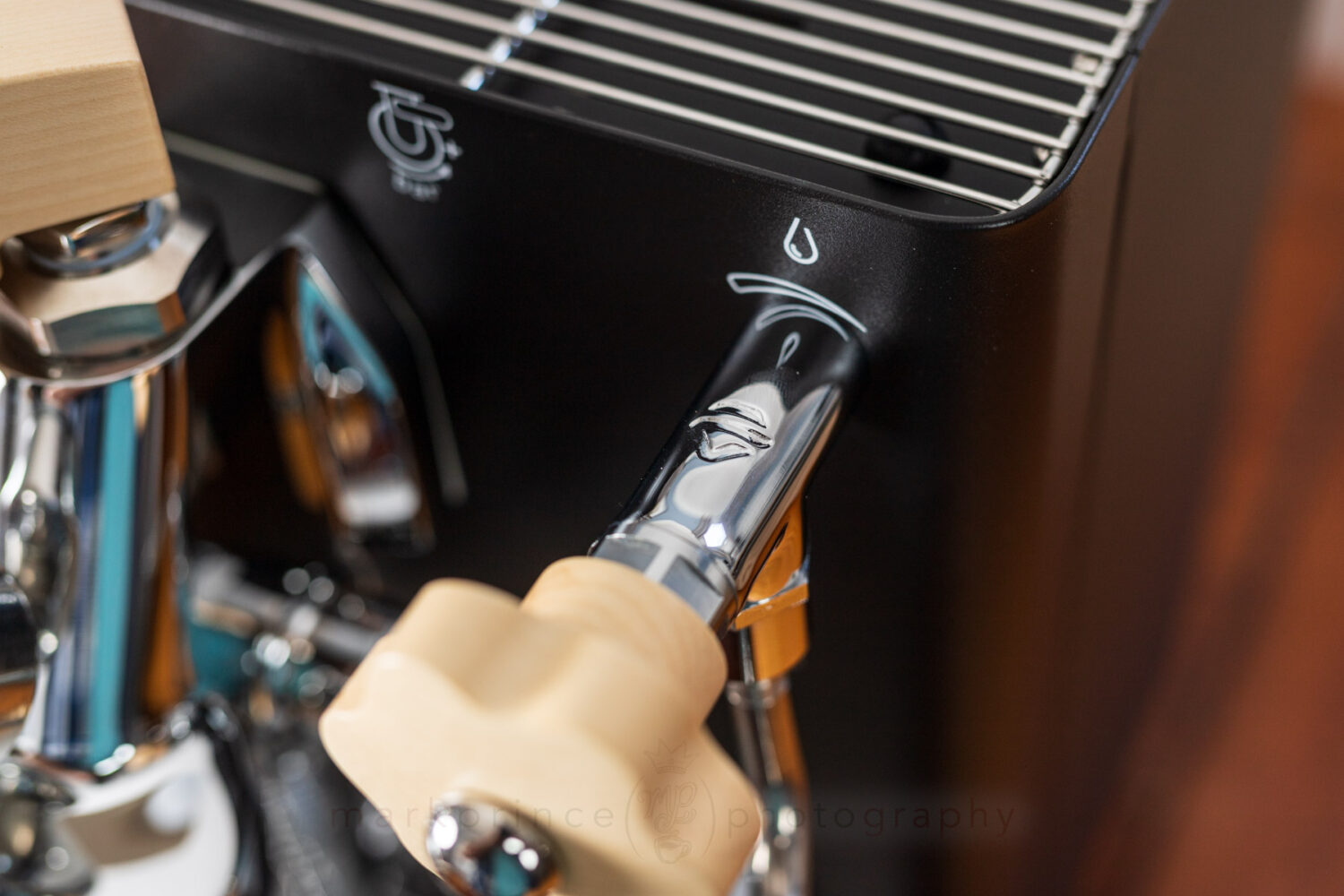
Then there’s what comes with the machine. The only thing missing is a steam pitcher, a scale, and cups. The Bianca comes with wood accents and parts and knobs and feet (that can cost you up to $500 more on the GS3); it comes with the complete direct plumbed in parts (so does the GS3); it comes with four IMS filter baskets. It comes with two portafilters: the beautiful spouted model, and a chopped unit (the GS3 comes with only one PF). The Bianca also comes with a very high end tamper, matched to your machine’s wood accents (La Marzocco gives a stock tamper with the GS3; fancy matched wood is extra).
To get a similar package with all the extras when buying a La Marzocco GS3, you would spend about $10,250 ($9,500 plus another $750 for the extra stuff), making the Bianca close to 1/4 the cost.
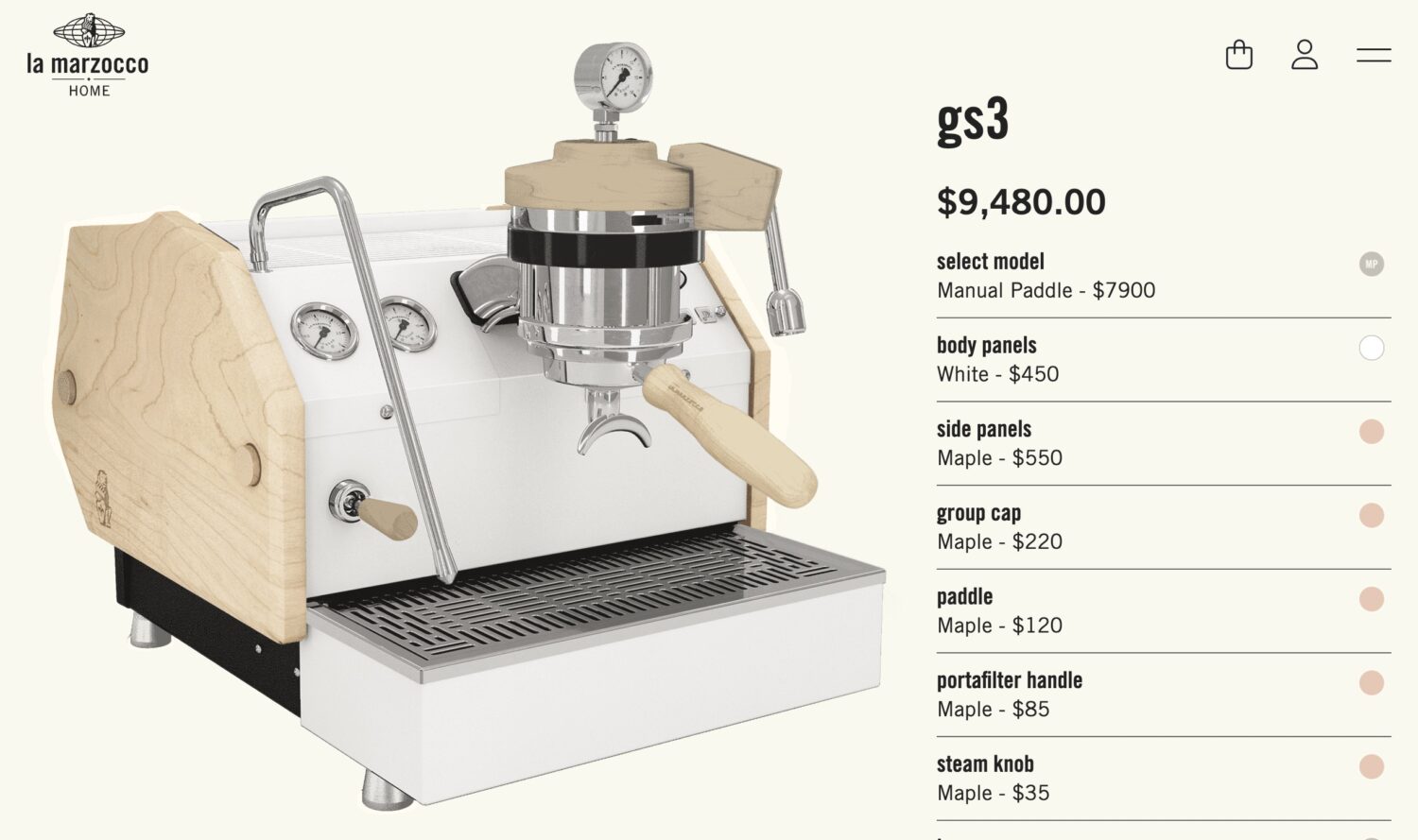
Things I learned about Lelit this year really push the Bianca to the top. You may know that Breville bought Lelit recently. Starting in January, they revoked the (previous) sole importer’s exclusive control over the brand in the USA, and are now directly handling distribution, sales, service and support. Even better, they are migrating Lelit’s after sales service and support to the Baratza team (which Breville also owns), and bringing Baratza’s parts availability and pricing system to Lelit.
That means if you buy a Lelit machine today or in the future, you will get Baratza style after sales service, support, and parts pricing. Absolute game changer. LM may charge you $250 for a drip tray cover, but if you want a new one for your Bianca, my guess is you’ll probably pay a fraction of that cost for it. New solenoid valve? Cost plus small handling charge. I bet they’ll even have new body panels available for the machine, at a very reasonable cost.
And one more thing happened. With most companies of high end espresso machines, the painted or limited edition colours are a premium price on top of the base models. La Marzocco charges $450 for custom colour choices on the GS3 (plus another $500 if you want upgraded side panels). Lelit was that way with the Bianca: the base steel unit was $3,000, and the premium white or black models were $200 more.
Breville decided to make them all $3,000 as of January of this year.
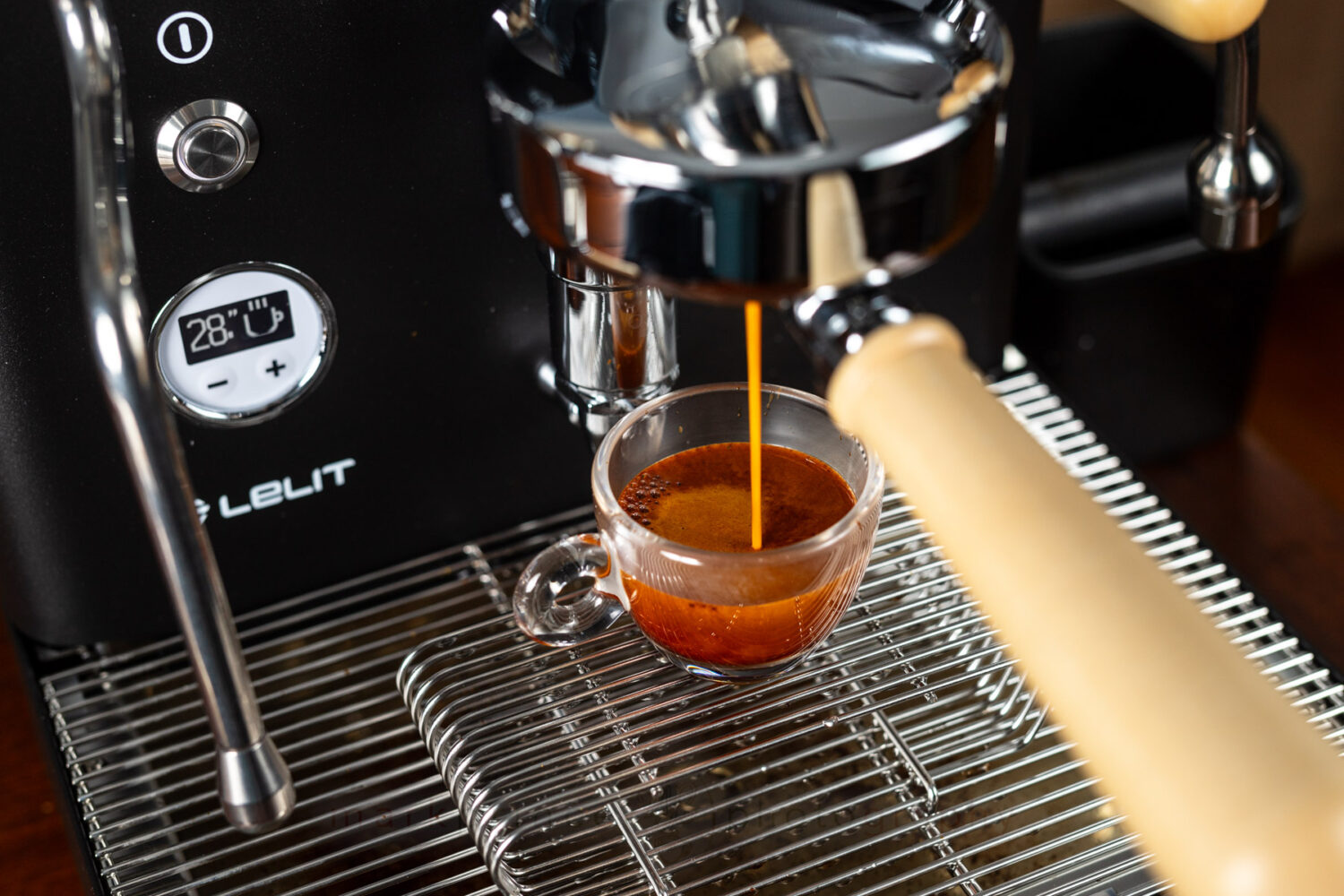
For $3,000, you are getting an incredibly advanced, extremely high end, generational machine that is absolutely state of the art. It isn’t perfect (we noticed more than a few things we’d like to see updated in the Bianca, which I’ll save for our review). But in terms of ability, engineering, robustness, parts used, features available, consistency in the cup, steaming ability, recovery times, pressure controls, accessories included, technology inside, parts availability, maintenance costs (yes, all of this), there is literally not a better machine available today for the home espresso enthusiast.
Unless of course $3,000 is just an unfathomable number for you for a home espresso machine.
Which brings us to…
The Breville Bambino Plus: The Best Espresso Machine of All Time

I know, crazy right? But when you think about it, for about $450 or less, (sometimes way less), the Breville Bambino Plus gives you a machine with the following:
- PID stable temperature controls (200F, non changeable) at the grouphead
- instant on ability, meaning you can pull a shot 3 seconds after turning on the machine
- instant steam ability, meaning you can start frothing milk about 3-4 seconds after turning the machine on, or after completing a shot pull
- automatic milk frothing ability via its early version of the MilQ system Breville keeps evolving. It produces authentic, high quality microfoam, completely hands off
- can still steam manually with the machine (and it’s powerful)
- full 9 bar at the grouphead thanks to a tuned OPV valve
- 3 way solenoid pressure relief after shot
- volumetric shot controls with preinfusion as well as a manual brew mode
- Extremely low power draw overall thanks to its heating system design
- hot water delivery built in (a surprising number of machines under $1000 do not have this, including the Profitec Go, or Turin Legato)
- Lots of parts available for the machine from Breville at very economical prices. The water reservoir, last I checked, is $35
- Can be serviced / modified by end user (OPV valve, dimmer mod, pump replacement, etc.
- Minimal scale issues (there’s no boiler to scale up).
Sure, the Bambino Plus has plenty of issues (the cup tray never heats up, the drip tray is pitifully tiny, the grouphead doesn’t heat up, necessitating a couple of blank flushes before a shot pull), but when you factor in the machine’s ability, consistency between shot pulls, instant on ability, steaming ability, temperature stability, parts availability and the absolute massive bang for the buck it delivers…
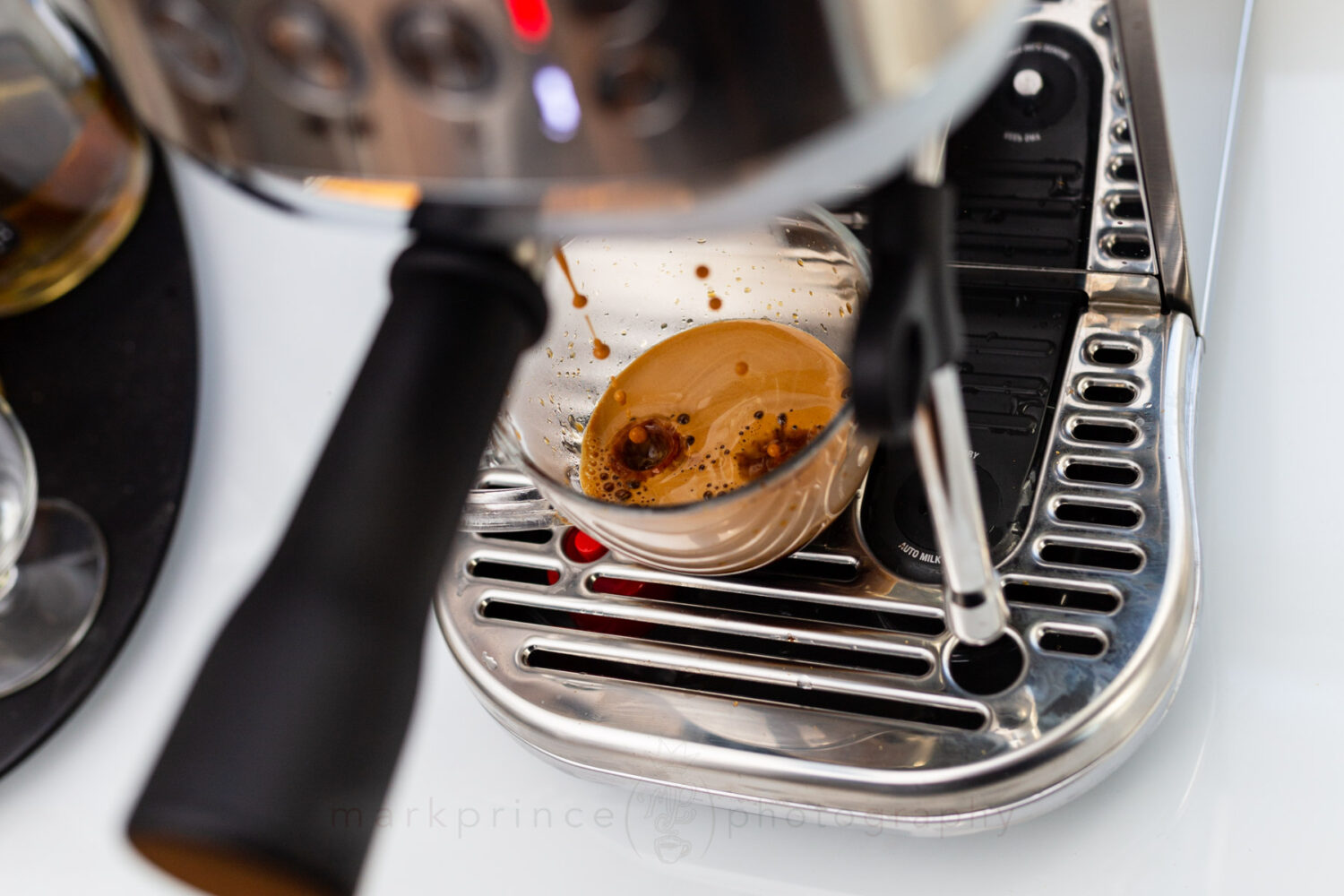
This is a candidate for the best espresso machine of all time. Because you could easily spend double the amount, buying a Profitec (Go), or Lelit (Victoria), as just two examples, and not get better espresso. You’ll get more robust, less plastic machines, but they also don’t have the technology the Bambino Plus does. I’d argue both machines don’t even steam nearly as well as the Bambino Plus does, automatically.
Best is Subjective but Price / Service Must be a Factor
As you can guess, this is all subjective. I’m sure my picks for the best espresso machines in the world won’t match what others pick. I always feel dollars play a very important part of the equation.
I owned two of the machines that most pundits would pick as the best consumer espresso machines ever made (and continue to own one of them). I absolutely loved working on the Speedster. It made me feel very different from how I feel pulling a shot on a Bambino Plus. But that machine was a serious financial black hole. The GS3 is as well.
Time will tell if the Lelit stands up to decades and decades of use where the overall service and maintenance is under $150 a year, averaged out over a decade or two. I think that’s a reasonable price to pay. Think of it as the strata fees you’d pay for a condo. The news I heard about Lelit going forward, following the Baratza after sales service model really pushed it over the top for me.
This is also why I haven’t mentioned the Decent Espresso machine yet. Many would pick that as the epitome – the toppermost of the poppermost – in espresso machines. I cannot. Though it is clearly one of the most advanced espresso machines you can buy today, it is also the most complex espresso machine available today. A gazillion parts inside, all needing to function correctly for the machine to work at full potential.
Decent is a tiny, almost cottage industry company. I’d make the guess that La Marzocco sells more GS3s in a year than Decent has sold in their lifetime. Service and support is really good, right now, but if the company dissolves down the road, owners of Decent machines might be left with an extremely expensive brick at some point.
For that main reason, and the potential for the machine to be an even more expensive money pit than a Speedster or GS3, I cannot consider it as the best machine you should buy.

Lelit is a massive company by comparison, and has a nationwide (in the US) service and support infrastructure being built right now, which will be as good as the service in Europe already is. They also have 35 years of sales and support to stand on.
And the Bambino Plus? I dare you to find another machine anywhere near its price point with its ability and tech inside. If it’s not the best espresso machine of all time, it’s certainly the best bang for the buck machine that’s ever existed. And for many, that also makes it the best, overall.























One Response
This is a very intriguing article. I especially like to focus on after sales service and support. I’ve long admired the La Marzocco GS3 from a distance, but learning the realities of owning such a bespoke, custom and hand built machine (and specifically the service costs) is a reality check. This article made me dive a bit into La Marzocco Home’s website, and I’m shocked at the prices they charge for various accessories and parts. I do hope your prediction that Lelit will become a lot more serious about after sales support, and the prices on parts and accessories comes true. I see Lelit is on a big sale right now. There may not be a Bianca in my future, but the might be a Victoria or Mara!